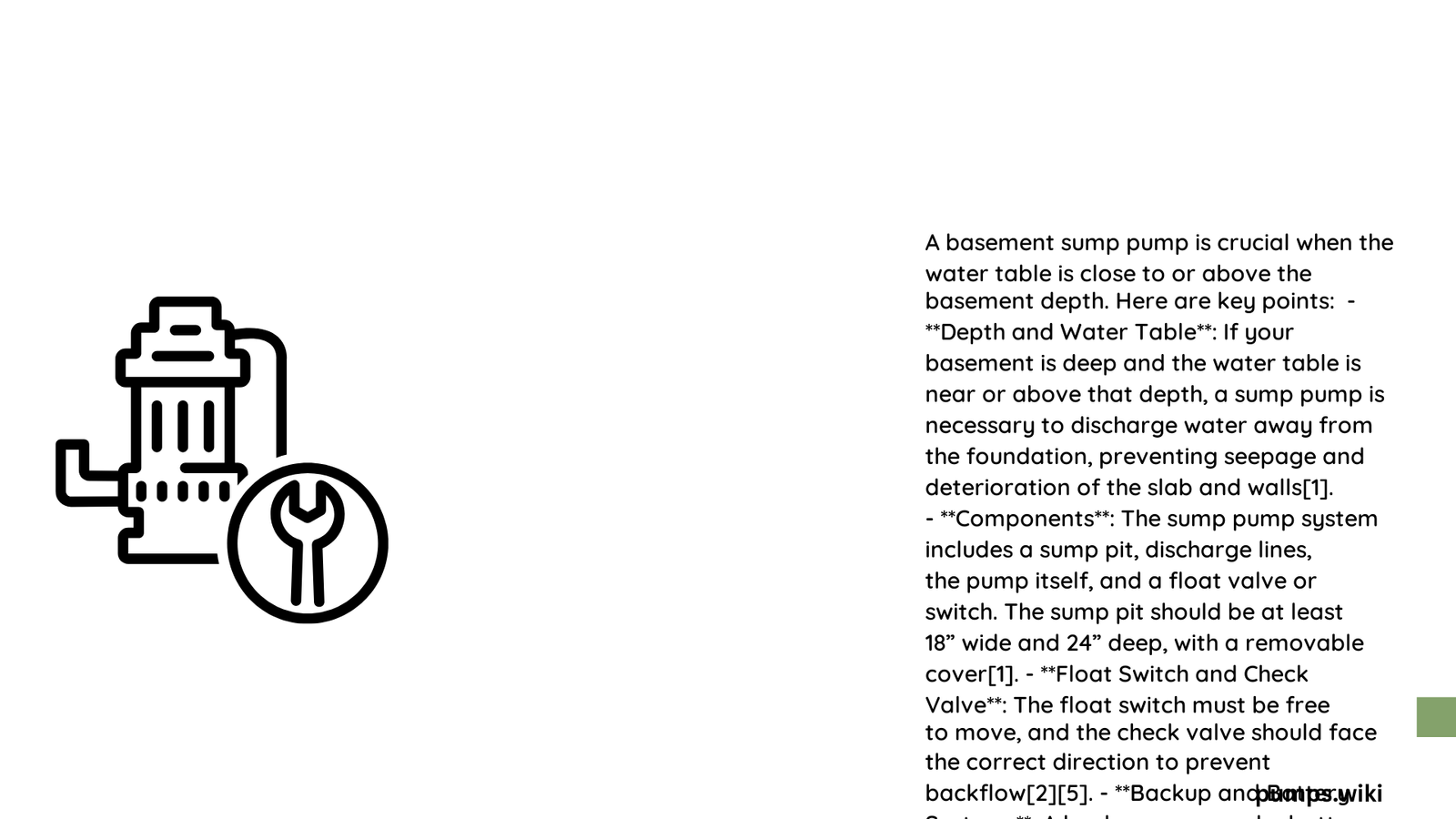Basement water table challenges can significantly impact home foundations, creating potential moisture and structural risks. Homeowners face critical decisions about managing groundwater levels, selecting appropriate sump pump systems, and preventing basement flooding. Understanding water table dynamics, pump specifications, and strategic installation techniques becomes essential for long-term property protection and maintaining a dry, safe living environment.
What Determines Basement Water Table Levels?
Water table levels are influenced by multiple geological and environmental factors:
Geological Composition
- Soil Type:
- Clay soils: Slower drainage, higher water retention
- Sandy soils: Faster drainage, lower water table
- Loamy soils: Moderate drainage characteristics
Regional Factors
- Annual precipitation
- Proximity to water bodies
- Local topographical features
- Underground water sources
How Deep Should Sump Pump Be Installed?

| Water Table Depth | Recommended Pump Installation | Risk Level |
|---|---|---|
| 0-2 feet | Immediate installation needed | High |
| 2-4 feet | Standard pump recommended | Moderate |
| 4-6 feet | Basic drainage system | Low |
What Pump Characteristics Matter for Water Table Management?
Critical Performance Metrics
- Gallons Per Minute (GPM): Indicates water removal capacity
- Head Height: Maximum vertical water lift distance
- Horsepower: Pump motor strength
- Float Switch Sensitivity: Activation mechanism precision
Top Sump Pump Recommendations for High Water Tables
Zoeller M53 Mighty-Mate
- Specifications:
- 1/3 HP motor
- 2,580 GPM capacity
- 20-foot head height
- Ideal for moderate water table scenarios
Wayne CDU800 Submersible
- Specifications:
- 1/2 HP motor
- 5,400 GPM capacity
- Robust construction
- Excellent for high water table environments
Preventative Maintenance Strategies
Regular Inspection Checklist
- Check float switch functionality
- Clean pump intake screens
- Test discharge line for blockages
- Verify check valve operation
- Assess basin condition annually
Installation Best Practices
Preparation Steps
- Conduct comprehensive site assessment
- Determine precise water table depth
- Select appropriate pump model
- Prepare proper drainage infrastructure
- Ensure professional-grade installation techniques
Cost Considerations
Investment Breakdown
- Basic sump pump system: $200-$500
- Professional installation: $500-$1,500
- Advanced water management systems: $1,500-$5,000
Warning Signs of Water Table Issues
Potential Red Flags
- Persistent basement moisture
- Musty odors
- Visible water stains
- Efflorescence on walls
- Sudden increase in humidity levels
Technical Recommendations
Expert Tips
- Always install with minimum 2-inch gravel base
- Use check valves to prevent backflow
- Implement battery backup systems
- Consider professional water table assessment
Conclusion
Effective basement sump pump water table management requires comprehensive understanding, strategic planning, and proactive maintenance. Homeowners must remain vigilant, invest in quality systems, and adapt to their specific geological conditions.
